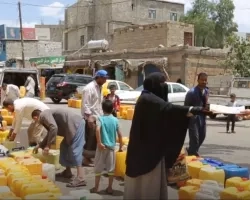NASA’s Health and Air Quality program area team is participating in the Air & Waste Management Association (A&WMA) 113th Annual Conference and Exhibition, which this year is being held virtually.
Association members and conference attendees often make local and state decisions on public health and air quality management. Researchers of the Health and Air Quality program area are bringing the latest research and Earth observation data available from NASA missions to the conference session. Their recorded video panel presentations provide an overview of research applications from NASA missions and discuss how Earth observation data support viewing human and environmental health as an interconnected system.
John Haynes, the Health and Air Quality program manager, will present on a panel about how NASA Earth-observing satellites offer data, products and applications to empower managers to make informed decisions in regulating air quality and improving air quality forecasting.
The panel, titled “Resolving Critical Air Quality and Health Issues from Space with NASA’s Future Earth Observing Satellites,” is co-chaired by Sue Estes, Health and Air Quality senior associate program manager, and Helena Chapman, associate program manager. It features two new NASA instruments that are scheduled to be launched no earlier than 2022 and will provide valuable data to air quality and health communities.
The NASA Multi-angle Imager for Aerosols (MAIA) instrument will measure where and how pollutants affect the scattering of sunlight and identify types and quantities of pollution around the world. As part of the MAIA mission, researchers will combine MAIA measurements with population health records to better understand associations between air pollution and health risks like adverse birth outcomes, cardiovascular and respiratory diseases and premature deaths. The Tropospheric Emissions: Monitoring Pollution (TEMPO) instrument will provide hourly sweeps over North America, giving unprecedented information on ozone, nitrogen dioxide, sulfur dioxide, and other key elements of air pollution. Together, these two missions will further expand how NASA satellite data can be used to track harmful air pollutants and inform public policy aimed at improving air quality.
The Health and Air Quality team also submitted an oral presentation for the “Assessing Exposure and Health Effects and Control of Regulated and Non-Regulated Air Pollutants II” session. The presentation, titled “One Health Collaborations: Key to Advancing Environmental Health Applications,” focuses on how NASA Earth-observing satellites can support the One Health approach, which recognizes the interconnected nature of human, animal and environmental health. To address the global burden of air pollution on the health of humans, animals and natural environments, NASA’s Earth-observing satellites are providing innovative data to air quality managers and other stakeholders to better inform their environmental health decisions and actions.
More about Earth Applied Sciences’s Health and Air Quality program area, can be found at the “What We Do” webpage.




